Jen Hitchings: Seven Suns

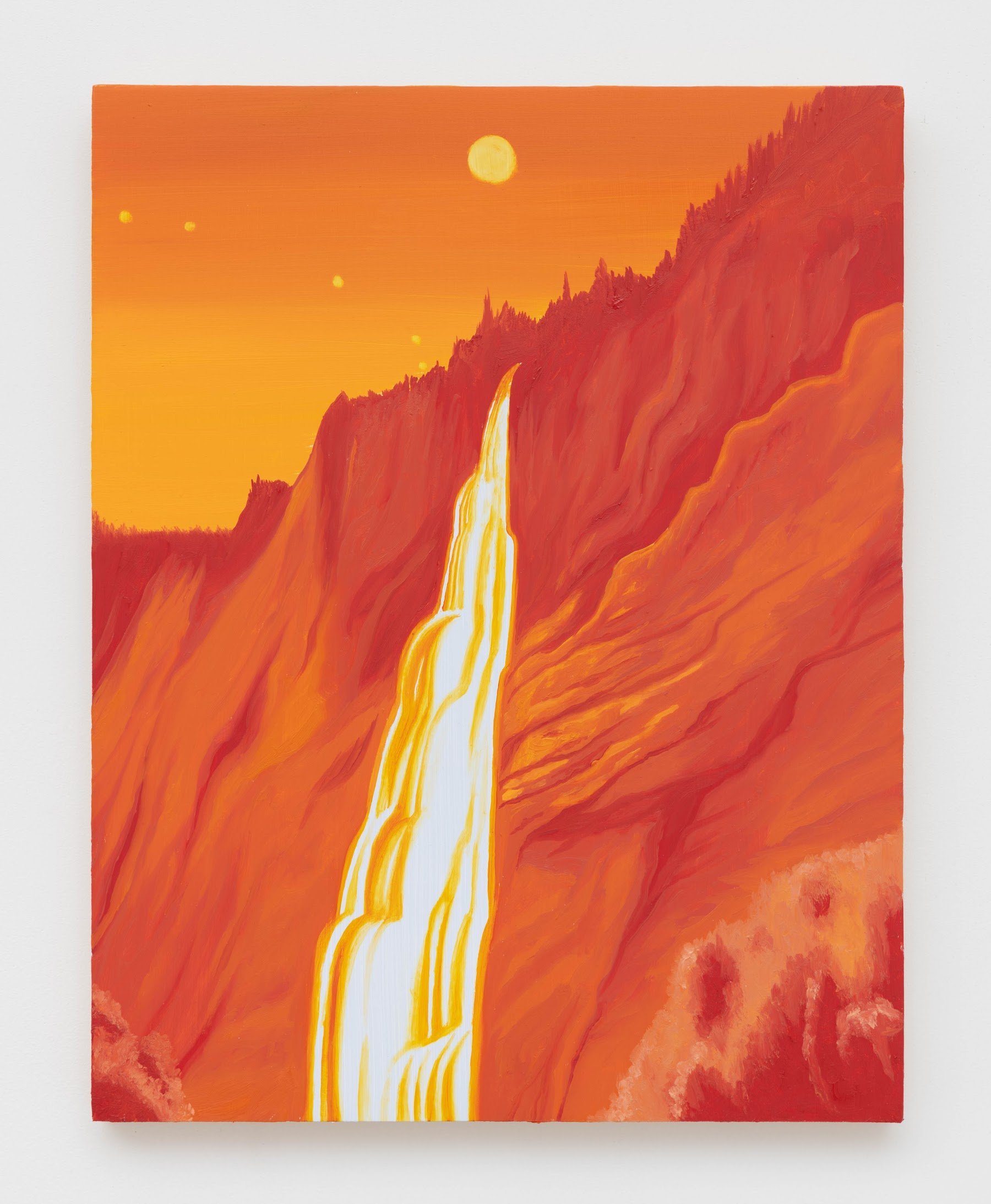
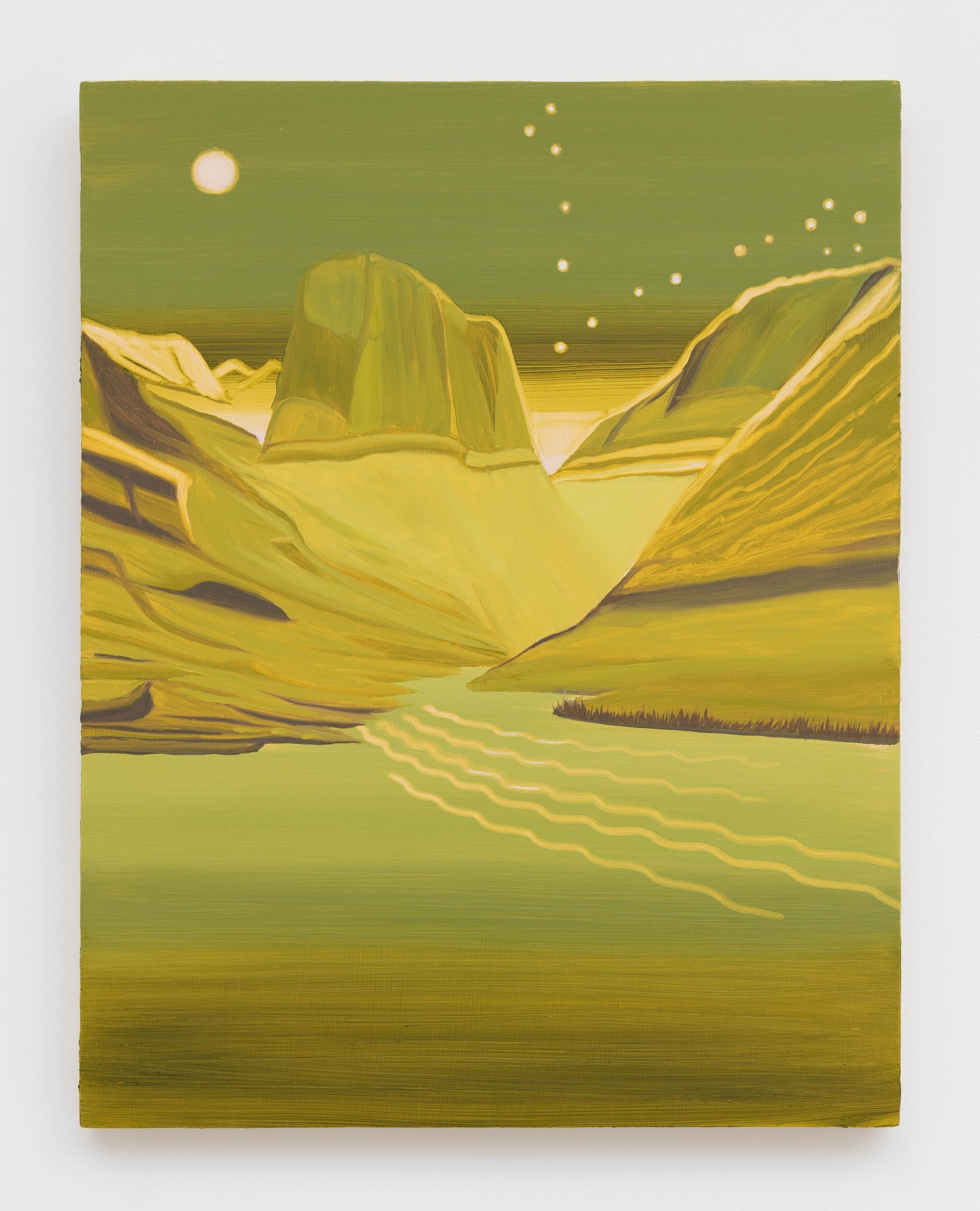

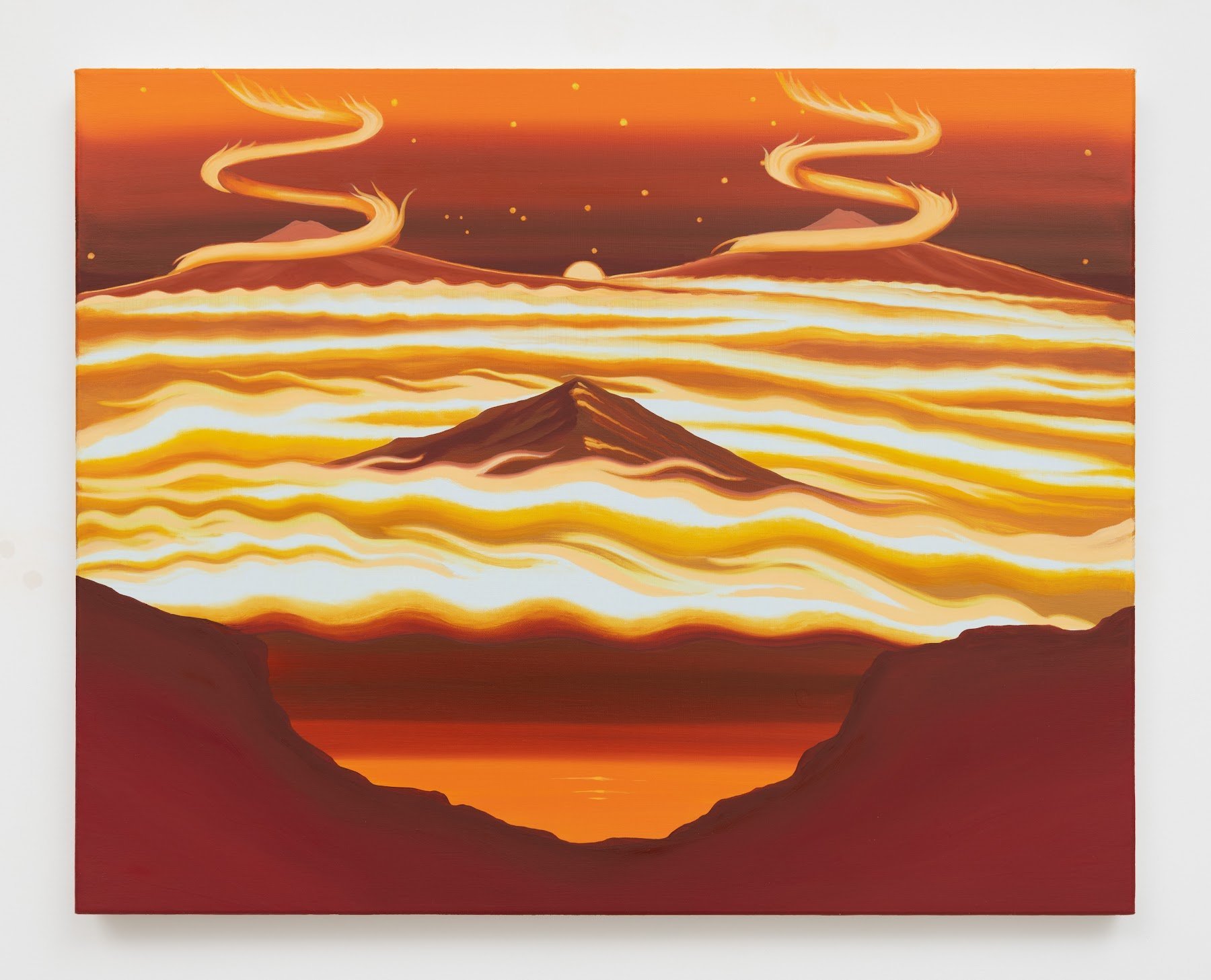
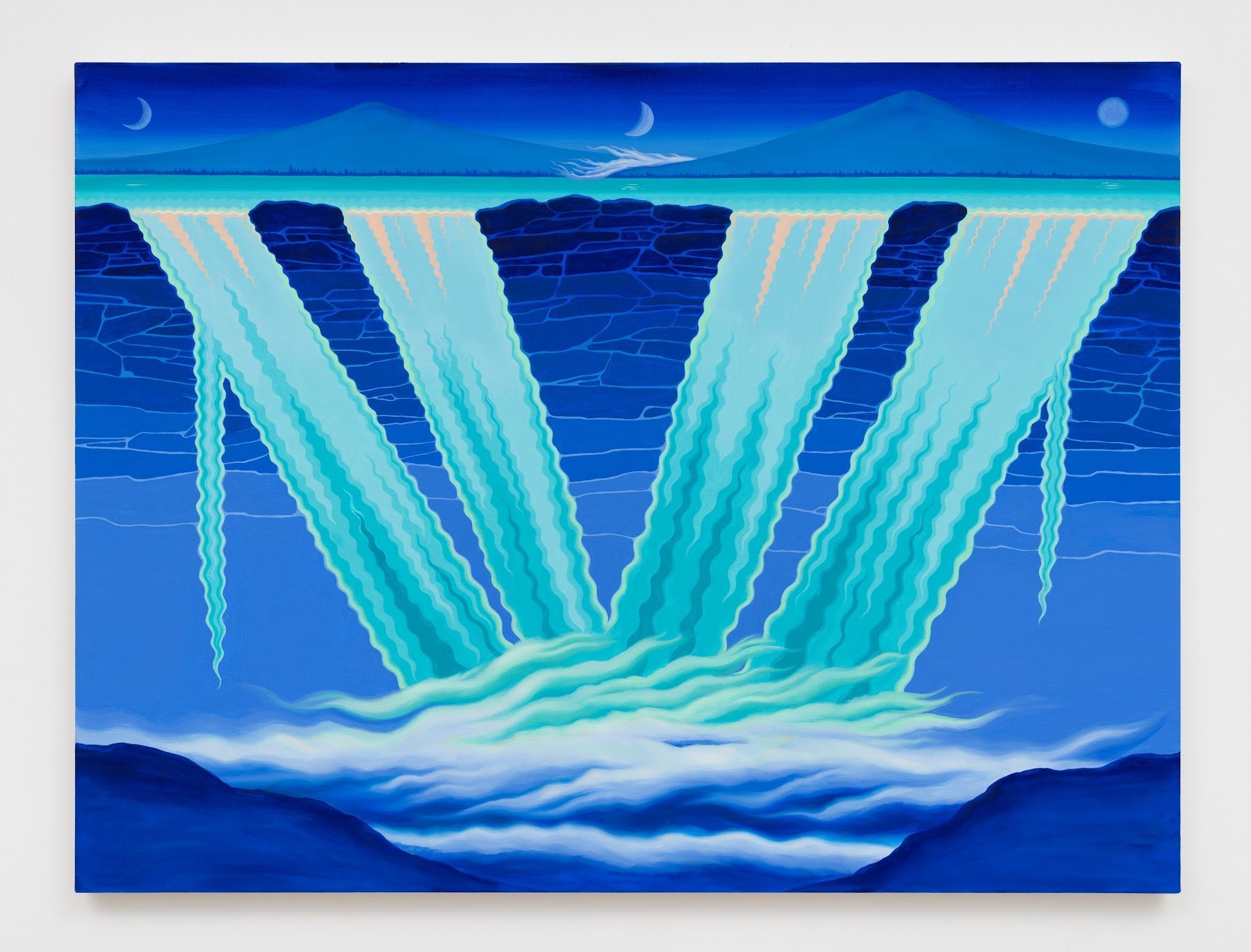

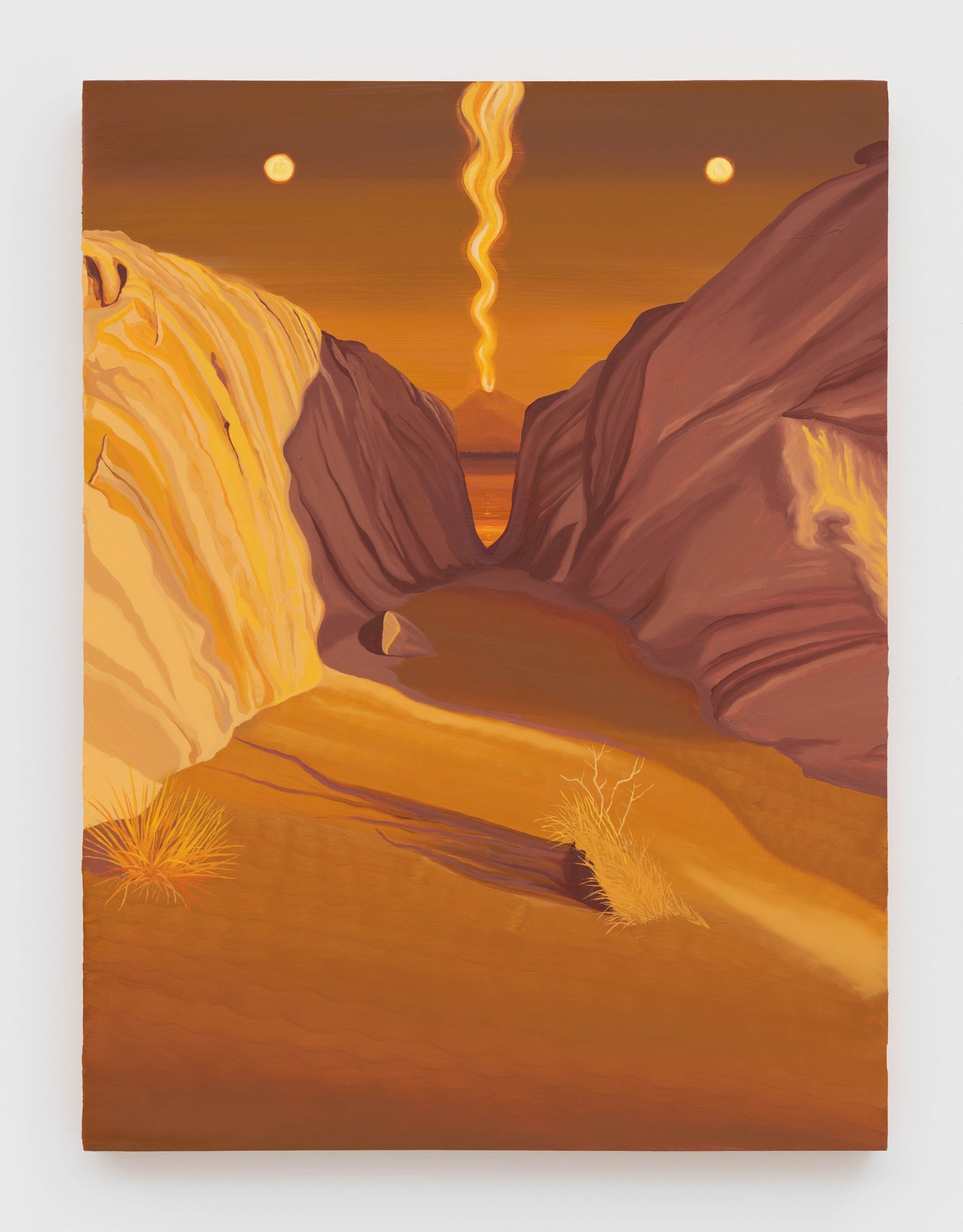
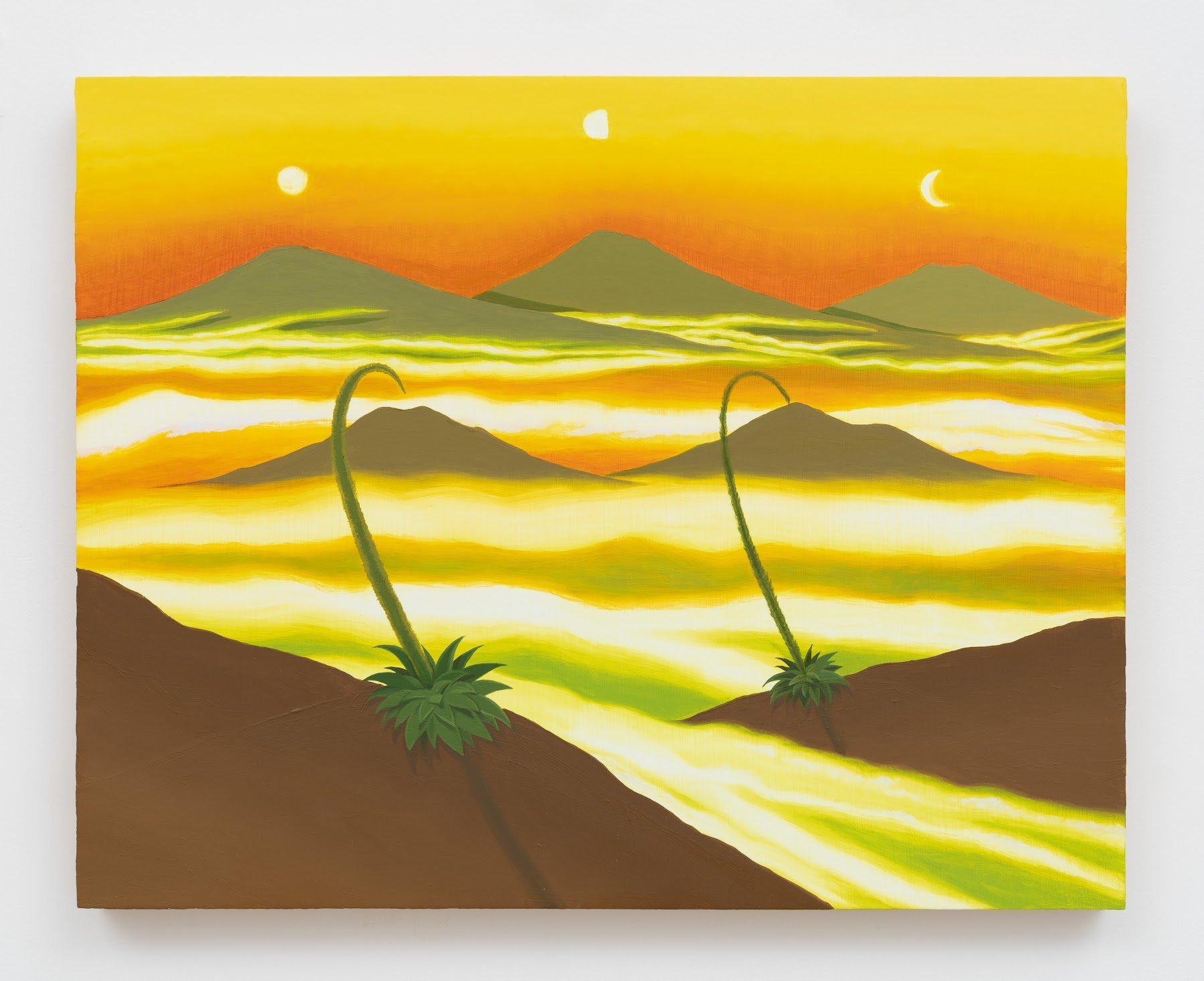
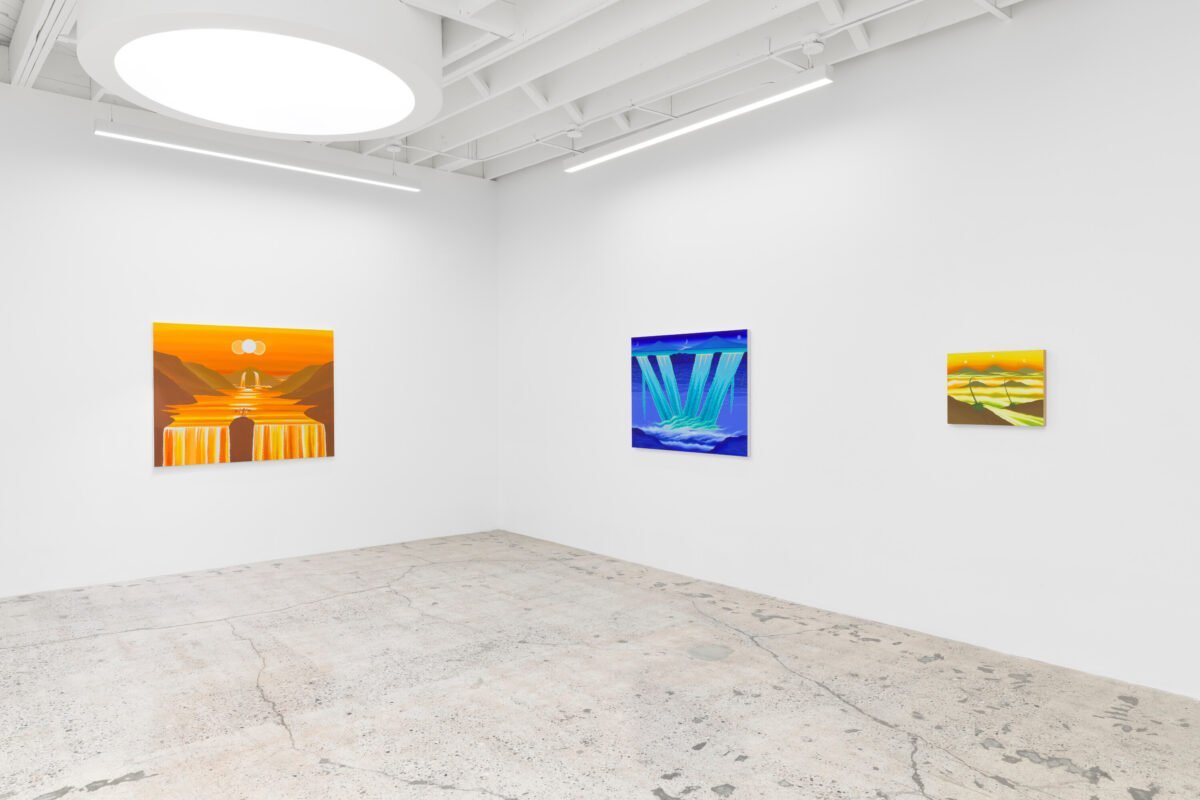
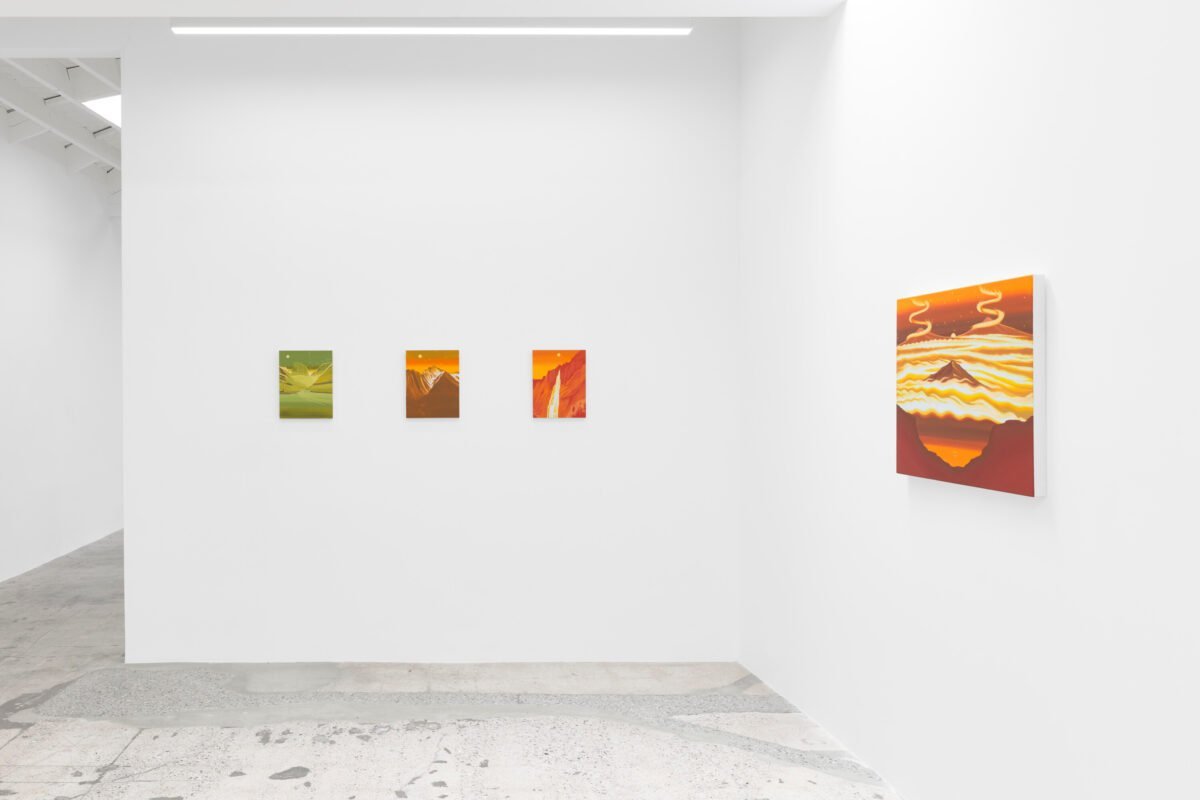
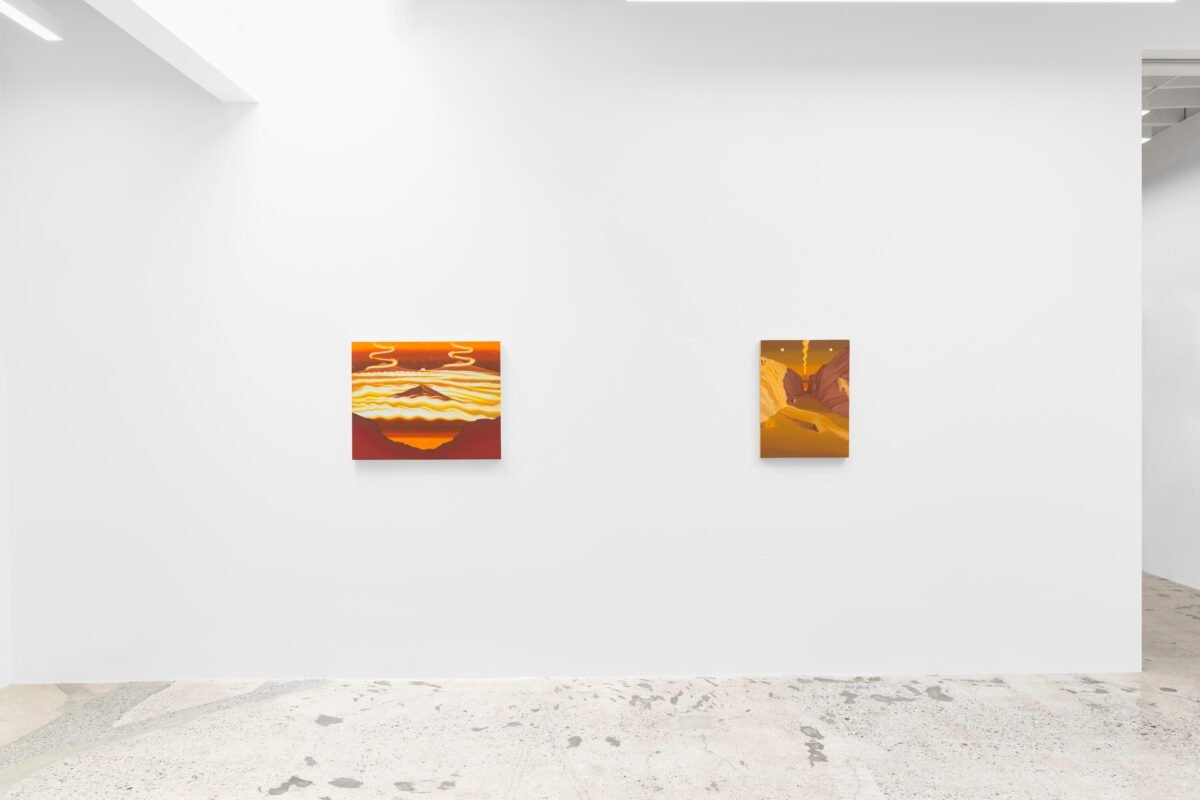
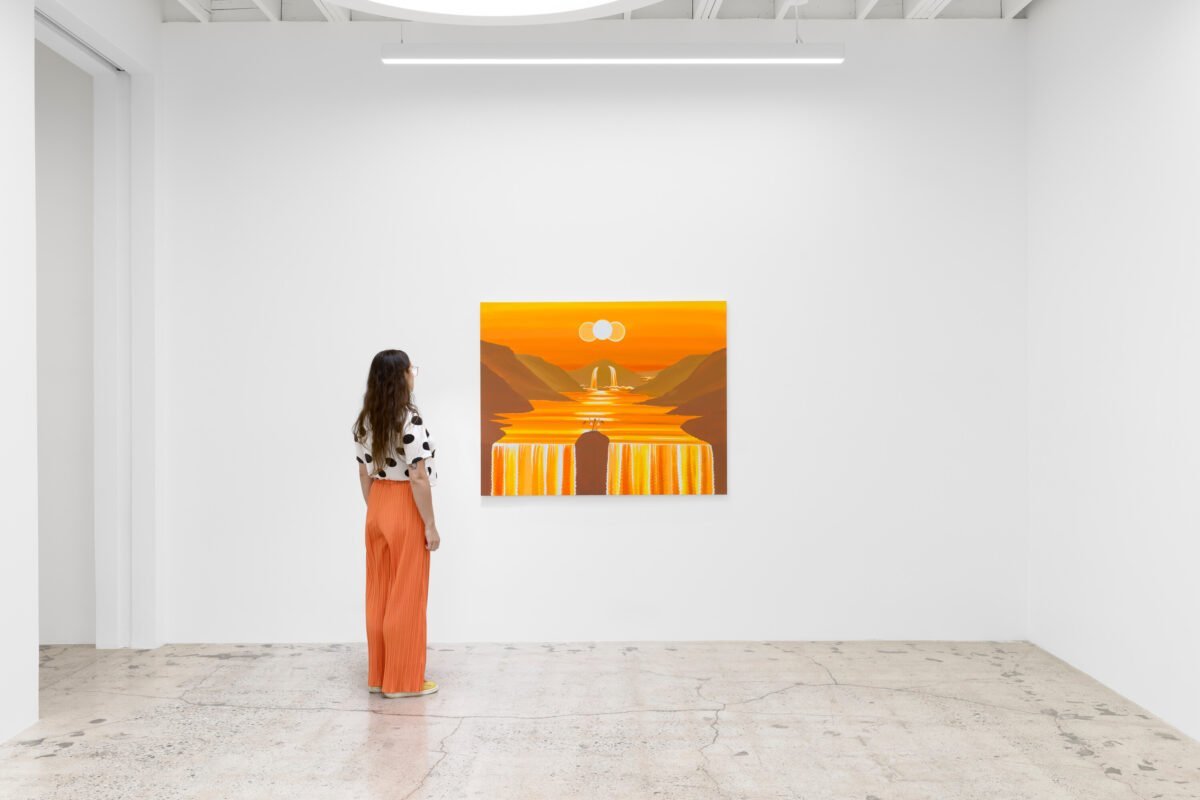
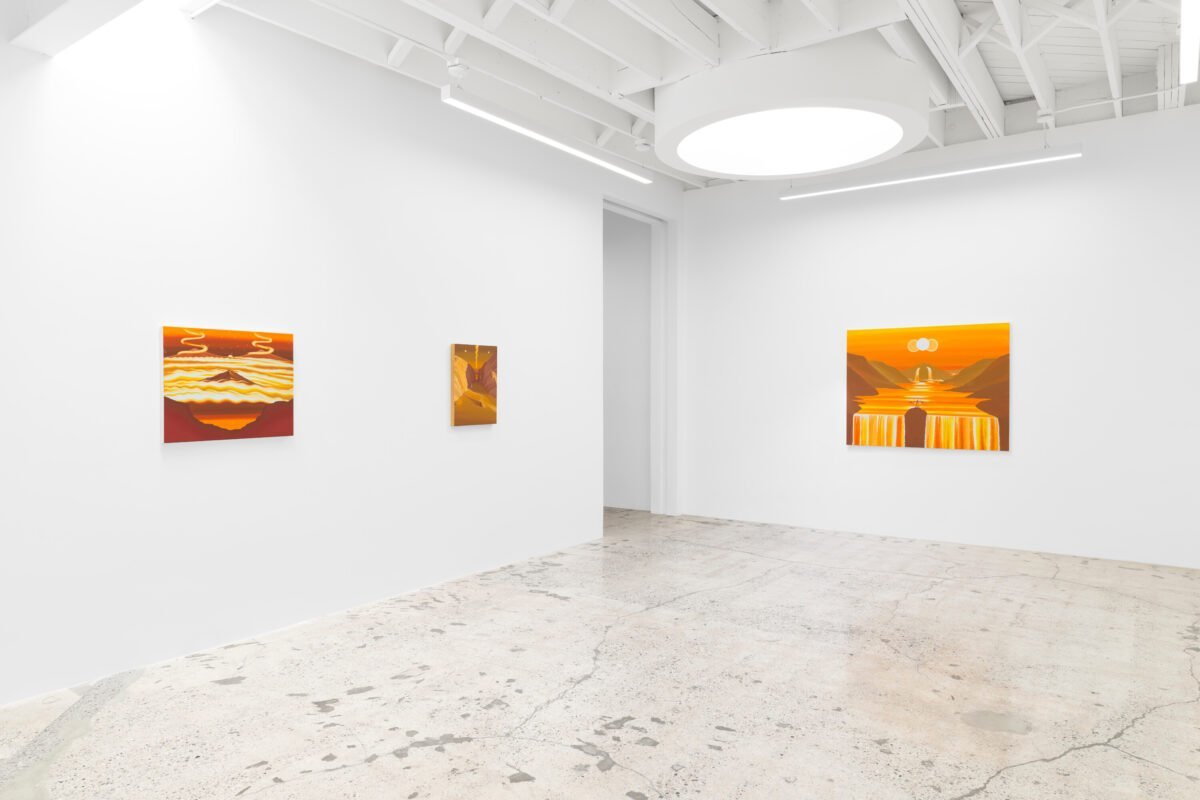
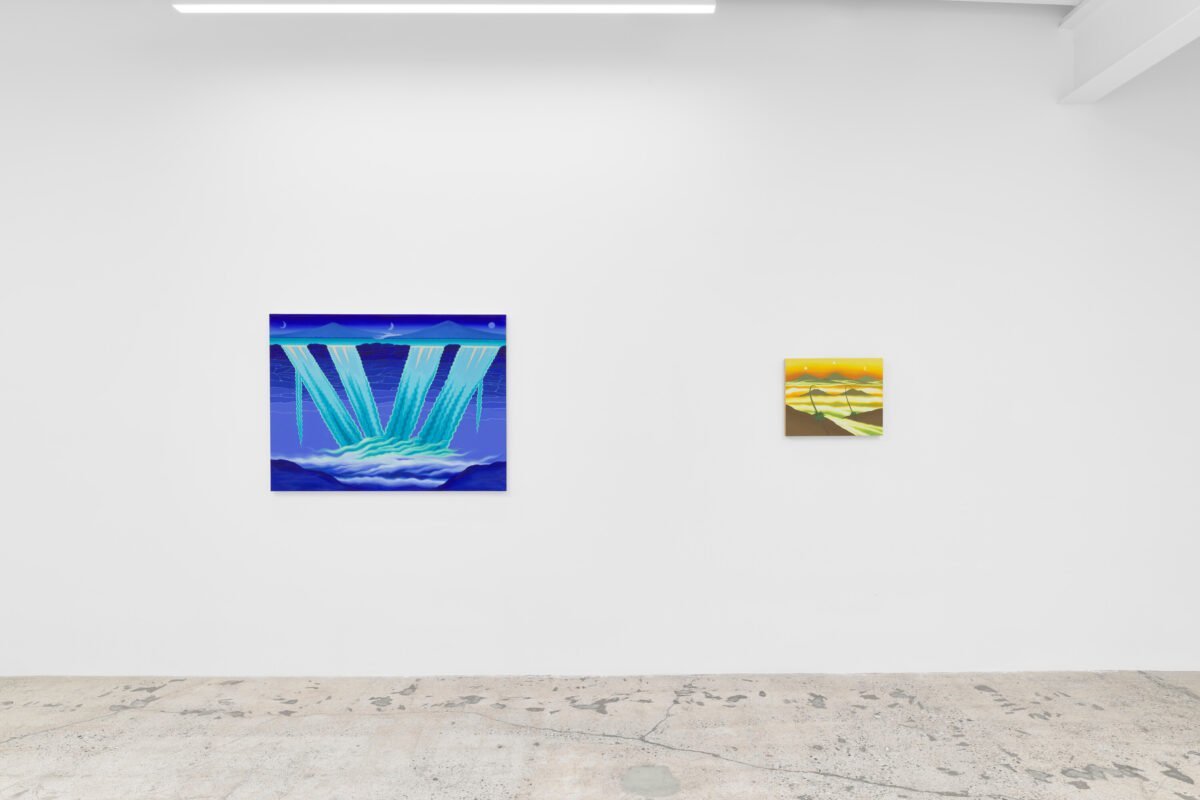
Jen Hitchings’ surreal landscapes reveal an ongoing investigation of the psyche, interpersonal relationships, erotic desire, and cosmic forces. Her compositions explore cycles and rhythms of human and natural experience: lunar, solar, seasonal, menstrual, reproductive, weather, and plant life. Physical and internal worlds convene in each painting through uncanny symmetry, patterns, and reflections, illuminating the beauty and mystery of nature.
The scenes are amalgamations of actual and imagined space, drawing inspiration from the Hudson River School painters, spiritualist archetypes, science fiction film posters, and psyche rock album covers. In Hitchings’ hands, the vastness of nature is transformed into otherworldly vistas, populated by glowing waterfalls, hazy mountain ridges, and beckoning coulees. Glimmering in the sky of many paintings, Hitchings includes a constellation of stars significant to each landscape or person she experienced the place with—a merging of the personal, emotional, and astronomical.
Serenely still, Hitchings’ world appears apocalyptic, a vision of the world when human life has ceased, or perhaps before it began. The exhibition title, Seven Suns, is an allusion to Buddhist eschatology, describing how the world will come to an end through sequential disappearance of water and eventual combustion. Elements within and between each painting are unified by subtle color shifts and tangents, seemingly unaffected by the human understanding of time and space Transcendentalism and Eastern philosophies guide Hitchings’ appreciation for nature, solitude, interconnectedness, and other beings—and consequently shape her vision of life and translation of it through painting.
Hitchings describes her landscapes as post-anthropocentric, depicting a version of our planet without human presence. The combination of naturalistic and acidic colors suggest an uninhabitable or potentially radioactive environment. However, stems and pairs of plants suggest a future, strong-willed survivors. This delicate, uncanny wavering between serenity and sorrow, isolation and unity, day and night, is the emotive response the works strive to elicit—where two opposites meet at the beginning and end of a cycle.
Press release and images via Anat Egbi Gallery.

